Workshop presentation and handout (PDF)
Assessment - October 2016 blog post (PDF)
Overview
This workshop was developed and delivered by Julie Timmermans, instructional developer with the Centre for Teaching Excellence, and Gordon Stubley, associate dean, Engineering teaching. The session was developed to help participants to:
- Identify a significant concept, bottleneck, or threshold concept in their course, and
- Develop a strategy for assessing students’ developing understanding of this concept.

Julie Timmermans and Gordon Stubley
The session began with participants noting six words to describe the purpose of assessment.
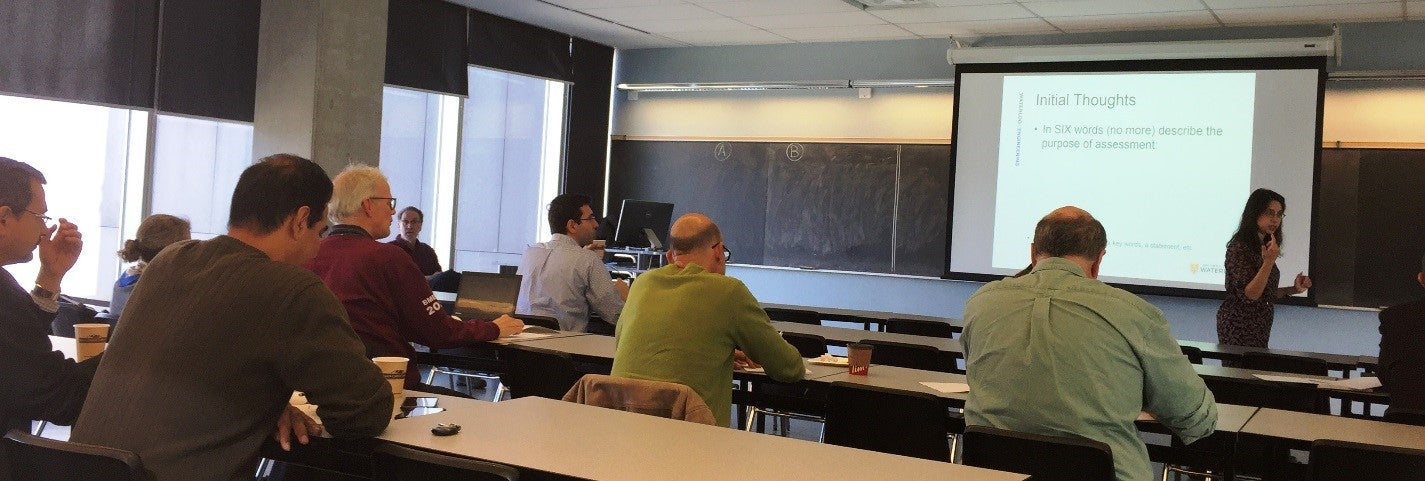
The participants were then divided into two groups: those with less than ten years of teaching experience and those with ten or more years of teaching experience.

The groups discussed their six words (some were significantly more than six!) and identified common themes.
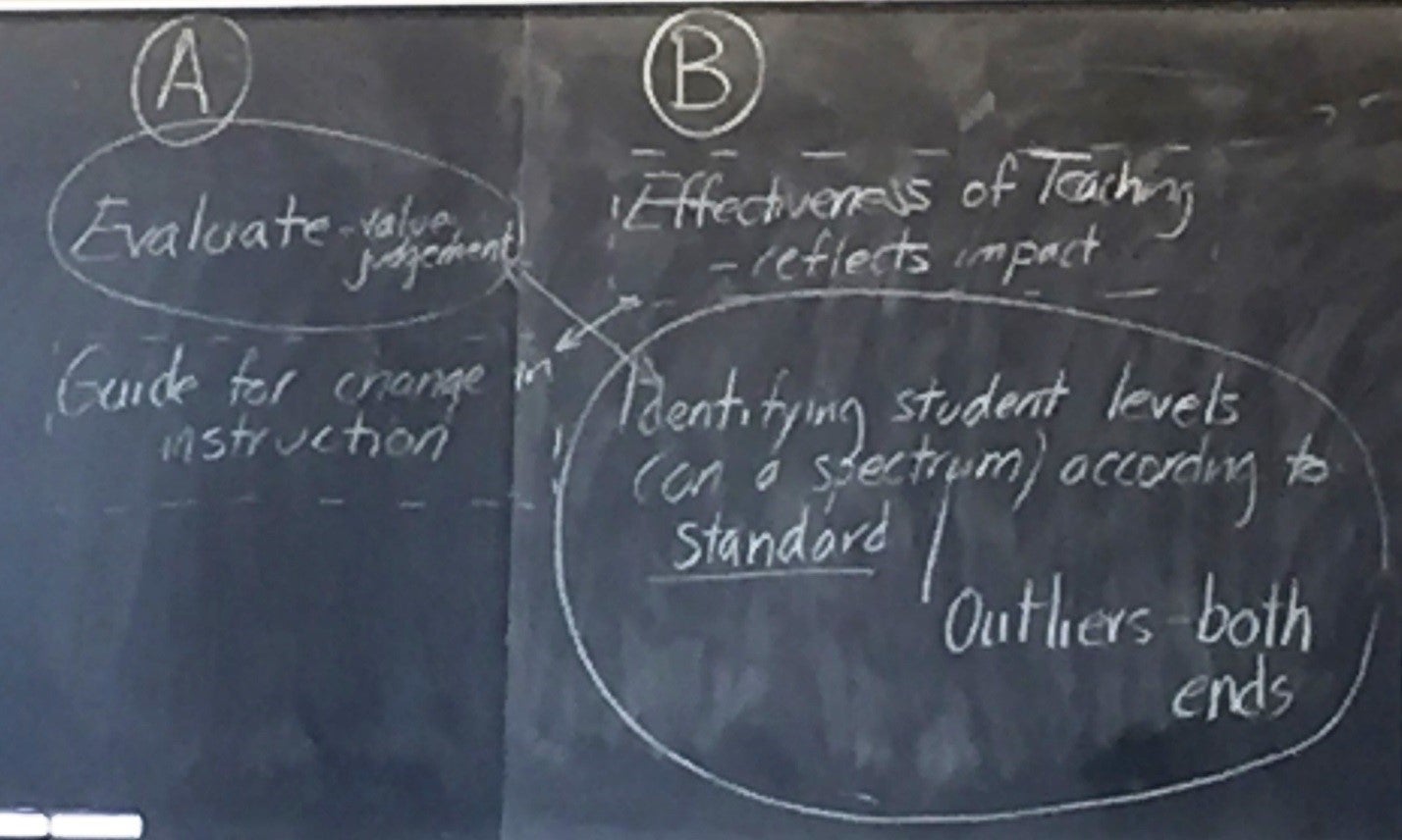
Group A: those with greater than 10 years of teaching experience and group B: those with more than 10 years of experience
Julie then described an assessment framework that could help instructors to obtain data to inform interpretation of assessment results and answer a fundamental question: Are students developing understanding?
Framework for assessment
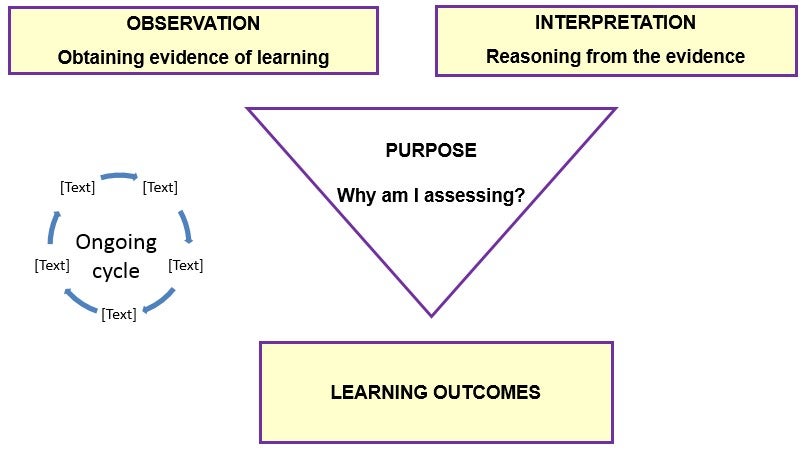
Adapted from National Research Council (2001).
Gordon then took the group through an example of how he had used pre- and post-assessment in one of his own courses to gauge students’ level of understanding of a threshold concept: the difference between transport and mixing processes in fluid flows involving heat and mass transfer.
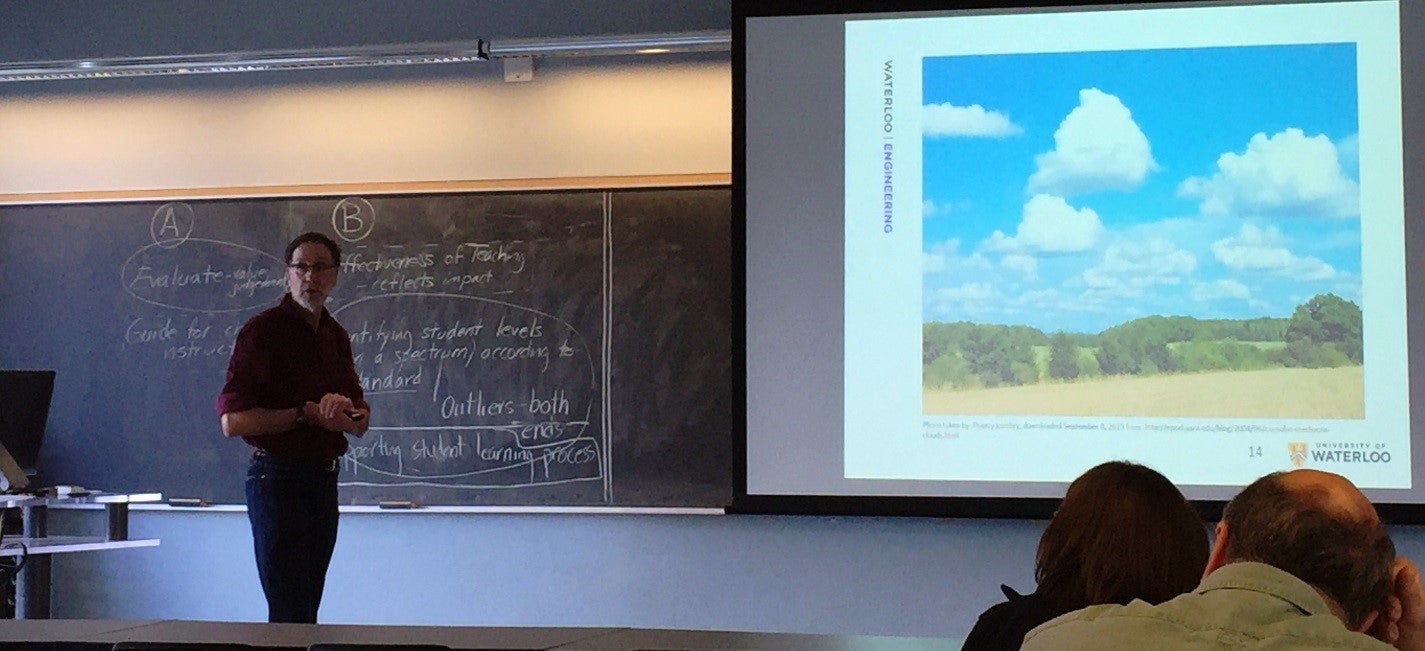
After a brief lesson describing the concept, Gordon presented two possible pre-assessment examples: one that would demonstrate student ability to apply the threshold concept and another that would make apparent the students’ understanding of pre-requisite knowledge.
- There are very weak (<0.1%) up and down motions in atmosphere: In the photograph identify a probable region of motion
- Application of TC
- What is that we see when we look at clouds?
- Where do the water drops in clouds come from?
- Pre-requisite knowledge
He also gave examples of post-assessment questions for this same concept.
- There are very weak (<0.1%) up and down motions in atmosphere: In the photograph identify a probable region of up motion and one of down motion
- At sunrise on a clear calm September early morning the ground level RH is high. Explain why there are no clouds?
Gordon noted both the inherent complexity of coming up with effective pre-assessments to show student conceptual ability and the scarcity of research on this aspect of effective teaching. He noted the following challenges in particular:
How to make a pre-test of conceptual ability prior to teaching
- Understandable, even to students who are relative novices;
- Actionable, so that students are able to complete the task;
- Fair, meaning that the task can’t be overly complex;
- And relevant, so that students see the value of the task?
Gordon referred to Svinicki’s 2004 work on student motivation for learning as a reminder of the impact of task value and for opportunity for success on student motivation. Participants were then asked to identify a significant concept in a course they taught and design a pre-assessment task to reveal either students’ pre-requisite knowledge or their ability to apply the concept.
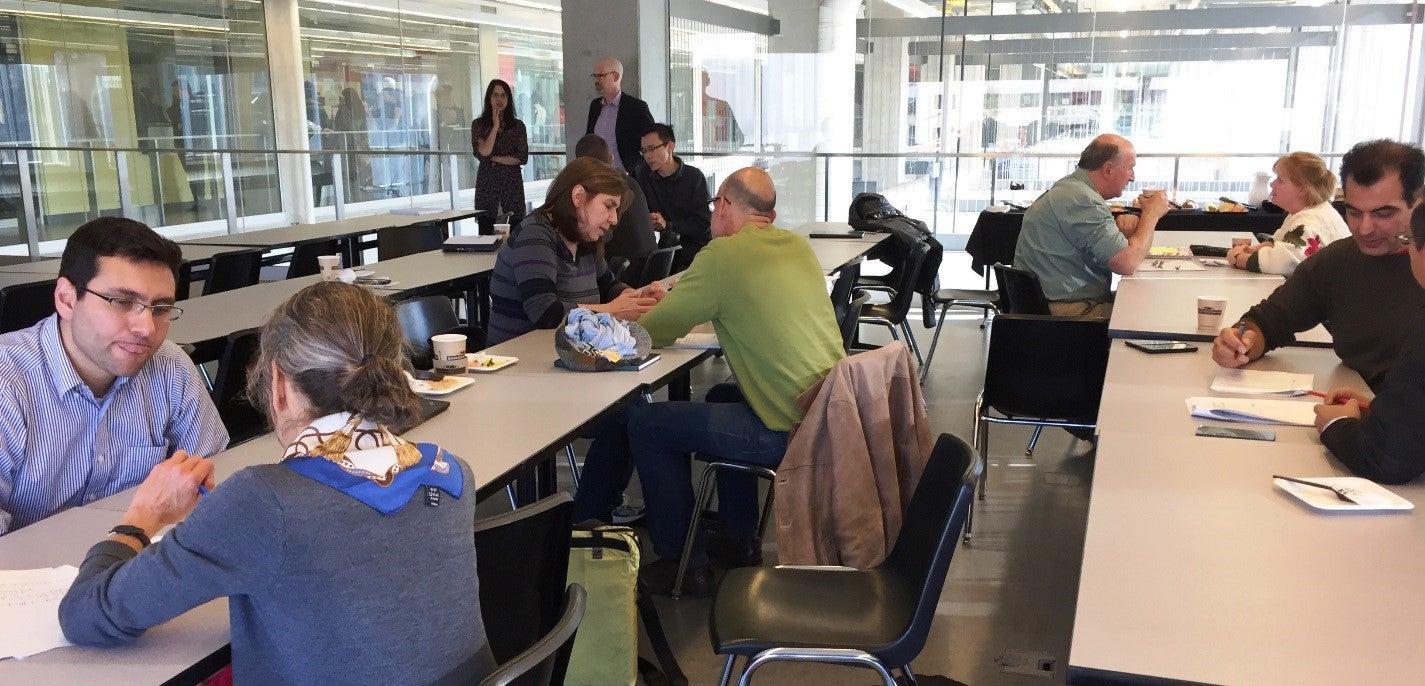
Once they had finished, participants described their concept and activity to a partner, who helped check that the task was understandable, actionable, fair, and relevant.
Benefits for instructors
- Can provide useful information about students’ knowledge of a topic and about their skills in communicating this knowledge
- Allows you to determine the gap between students’ current ways of understanding and your intended outcomes for the course in terms of their understanding
- Allows you to identify preconceptions and misconceptions
- Provides baseline data for making decisions about instruction (i.e., deciding what and how to teach)
- By starting where students are, you provide a “hook for new information to hang on”– this is an important strategy for promoting deep learning
Benefits for students
- Provides both a preview of material to come and a review of what they already know
- Allows students to assess their level of preparation in relation to the group and find out how the whole class did
- Allows students to recall knowledge and make connections to prior experiences and knowledge, which enables deep learning
References
Angelo, T. A., & Cross, P. K. (1993). Classroom Assessment Techniques: A handbook for college teachers (2nd ed.). San Francisco, CA: Jossey-Bass.
Gunder, A. (2012, November 1). Designing effective webinars: Creating pre- and post-assessments. Retrieved from http://www.adesinamedia.com/webinars/designing/creating-pre-assessment-activities/
McTighe, J. & O’Connor, K. (2005). Seven practices for effective learning. Educational Leadership, 63, 10-17.
National Research Council (2001). Knowing What Students Know: The Science and Design of Educational Assessment. Washington, DC: National Academy Press, p. 44. Available for download at https://www.nap.edu/
Shulman, L. S. (2005). Signature pedagogies in the professions. Daedalus, 134(3), 52-59.
Svinicki, M.D. (2004), Learning and Motivation in the Postsecondary Classroom, Anker Publishing Co., San Francisco CA.